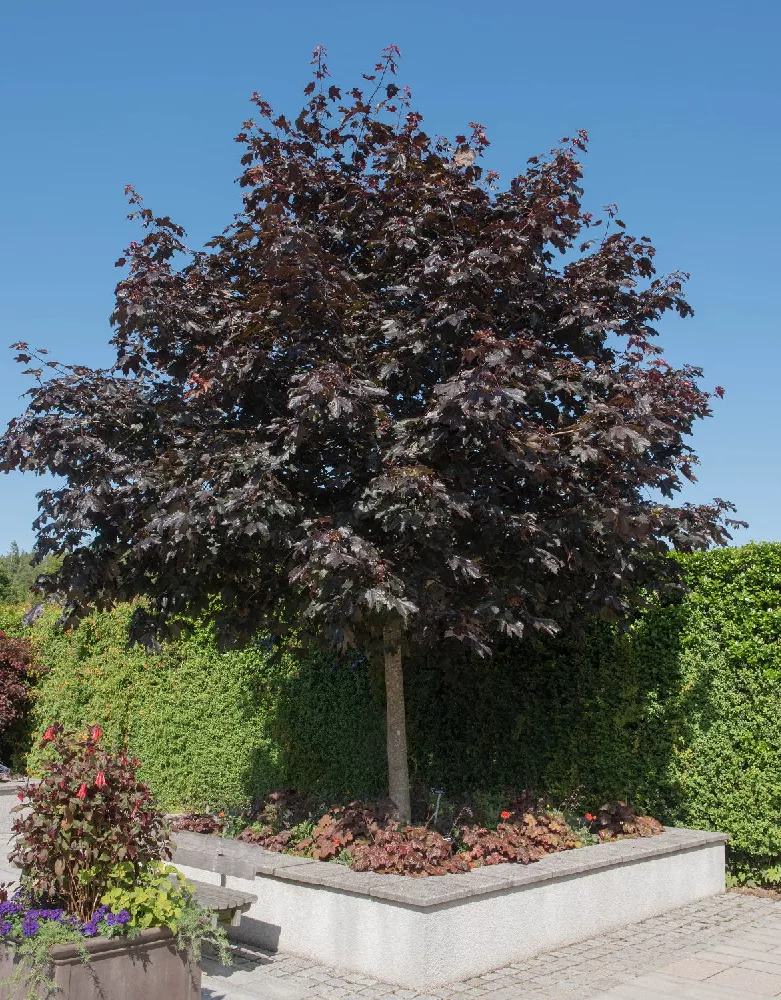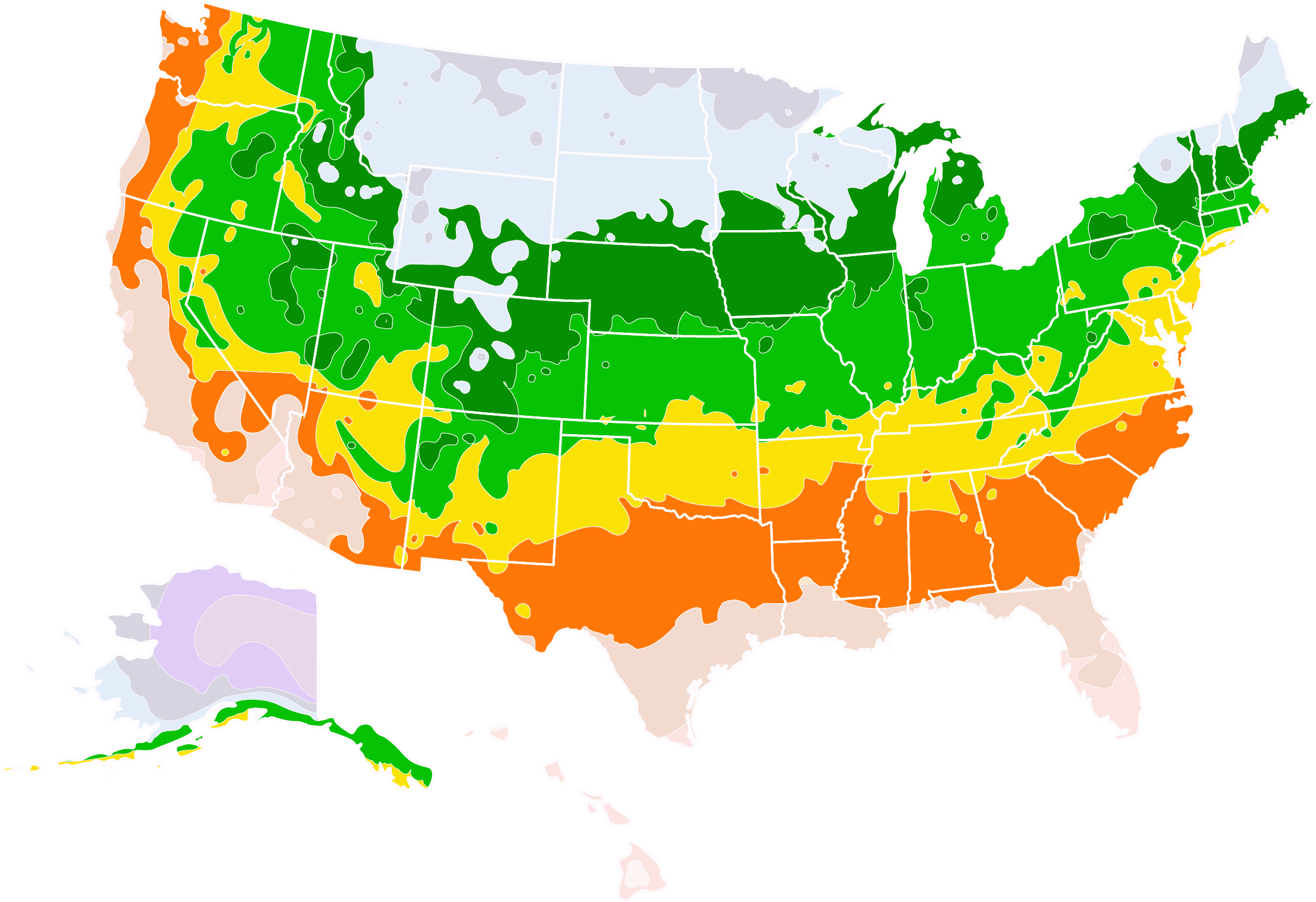- Home >
- Maple Trees >
- Red Japanese Maple Tree
Red Japanese Maple Tree for Sale - Buying & Growing Guide
- Ships in 1-2 days
- 1-Year Warranty Eligible
- Pots or accessories are not included unless specified in the product options.
Shipping Details:
Once your order is shipped, you’ll receive an email with a tracking number and estimated delivery date. Most orders ship immediately, but some items are seasonal and may only ship in spring or fall. These products are noted on the website.
The red Japanese maple tree, also known as Acer palmatum, is one of the most popular plant options for homeowners throughout the United States. This medium-sized deciduous tree dazzles with its leaf shape and deep red foliage color throughout the growing season. This plant also has an intriguing growth habit, with curving branches that expand from a central trunk. Fortunately, red Japanese maple trees are quite resilient and relatively easy to care for, which only adds to their popularity.
- Lovely leaf shape and color throughout the growing season.
- One of the most popular and attractive specimens in residential landscape design.
- Minimal maintenance and admirable hardiness.
Plant Care
Sunlight

The red Japanese maple tree can grow in either full sunlight or partial shade conditions.
Watering
Weekly watering is often the best approach for this plant.
Fertilizing

Fertilize once during the later winter or early spring. Avoid giving this plant too much nitrogen.
Planting and Care
Planting instructions
When planting a red Japanese maple tree, begin by digging a hole that is significantly wider than the root ball and about as deep as the root ball is tall. The location in which you dig this hole should include soil with adequate drainage and organic materials.
You should also anticipate the overall size of a red Japanese maple tree. While these plants are not incredibly tall, they can develop a significant spread. Make sure that your tree has as much space to spread horizontally as it will need in the years to come.
Watering and nutrients
The soil where a red Japanese maple tree lives should be neither too wet nor too dry. Generally, a single weekly watering will be enough to keep these plants happy moisture-wise. During drought, you’ll likely need to increase this watering frequency to multiple times per week.
You should begin fertilizing your red Japanese maple tree only after it has had time to establish itself in its growing location over one or two full growing seasons. After establishment, you can give your tree fertilizer once per year in the early spring. The fertilizer you use should be somewhat low in nitrogen.
Pollination
A red Japanese maple tree will bloom with small, red flowers during the late spring. These flowers are usually unremarkable from an ornamental perspective but will attract insect pollinators during that time of year.
Red Japanese maple trees usually have male and female flowers on a single specimen, making pollination easy. When pollination occurs, this tree will develop fruit in the form of winged samara. However, pollination is not typically a specific goal or concern for those who grow this plant, as the red Japanese maple tree is primarily an ornamental plant.
Pruning
Red Japanese maple trees typically respond well to light pruning in the winter or during the summer. You can prune these trees to alter their overall shape and appearance or remove any part of the tree that is dead, damaged, or dying.
Be judicious when pruning, especially when this tree is young. Young red Japanese maple trees will respond to pruning by putting out new growth. However, this new growth can be thin and spindly, detracting from this tree’s overall form. The less pruning you do, the fewer of these weaker branches will appear.
Pest, diseases, and animals
The top issues that can befall a red Japanese maple tree relate to its foliage. Since the leaves of this species are responsible for adding a lot of ornamental value, you’ll want to do all you can to protect their integrity.
Various forms of leaf spot and leaf tip blight can occur in a red Japanese maple tree, and each of these conditions can cause discoloration and deformities in the foliage. Insect infestations can also be a problem for this tree, with Japanese beetles, mealybugs, and mites being the most common offenders.
Achieving maximum results
Unlike many other popular plant species, red Japanese maple trees prefer lower amounts of fertilization and pruning. Interestingly, this plant will develop the most graceful and impressive form when you allow it to grow slowly.
Providing fertilizer, especially nitrogen-rich fertilizer, can encourage your plant to quickly produce new growth that can be both weak and unattractive. Excessive pruning at a young age can cause the same results. If you want your red Japanese maple to look its best, you should let it grow somewhat naturally, as it will typically develop a beautiful form on its own.
FAQs
Are red Japanese maple trees low-maintenance?
Although red Japanese maple trees are not maintenance-free, they do require less attention than other plants. For instance, the pruning and fertilization needs for a red Japanese maple tree are low. These plants also can adapt to different growing locations, and they can be hardy as well. These factors make the red Japanese maple tree easy to care for, even if you are a novice gardener.
What plants grow best under a red Japanese maple tree?
Red Japanese maple trees tend to have a wide spread, allowing them to cast plenty of shade beneath their canopies. Based on those conditions, you'll need to find plants that tolerate shade to grow beneath one of these trees. It's also best to choose plants that complement the appearance of a red Japanese maple tree. Hostas, azaleas, and many other plants will meet both of those qualifications.
Do red Japanese maple trees have deep roots?
Red Japanese maple trees do not tend to have deep roots. In most cases, these trees will send their roots no more than 3 feet down into the soil. By contrast, the roots of these trees often spread quite wide. In fact, they may spread well beyond the extent of the canopy. With that said, red Japanese maple tree roots are not usually strong enough to disrupt pavement or other physical elements in your yard.
Compare Similar Products
Customer Reviews
 nice
niceIt seems to be doing well I hope it will survive the winter. Is there anything I can do to good promote growth?
 Japanese Maple purchase
Japanese Maple purchaseOutstanding experience. Product arrived quickly, packaged very well, and in excellent condition.
 Red Japanese maple
Red Japanese mapleThe red Japanese maple you sent me is healthy and well . it was supposed to be 2 to 3 feet and it is . I guess, Wishful thinking, I was hoping for maybe one bigger for it has a premium price on it, And I waited Much longer than was predicted to me . it's cute .hopefully it Grows fast .but it was well packed and I appreciate that .thank you
You can't add more Product Name - Product size to the cart.
OK








